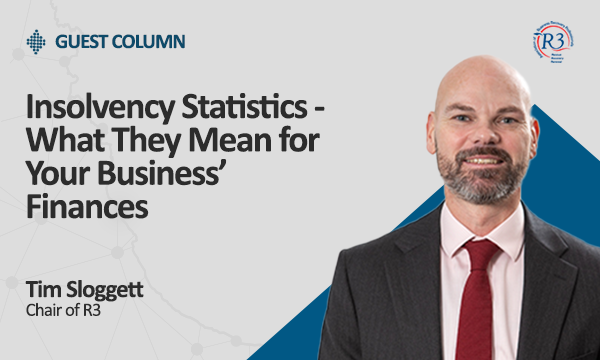Insolvency Practitioner Fundamentals Explained
A Biased View of Insolvency Practitioner
Table of ContentsLittle Known Facts About Insolvency Practitioner.The Buzz on Insolvency PractitionerThe Single Strategy To Use For Insolvency Practitioner4 Easy Facts About Insolvency Practitioner Explained4 Simple Techniques For Insolvency PractitionerThe Facts About Insolvency Practitioner RevealedGetting The Insolvency Practitioner To Work
Bankruptcy is when responsibilities are higher than the value of the company, or when a borrower can not pay the debts they owe. A company can come to be insolvent due to a variety of circumstances that result in inadequate capital. When confronted with insolvency, an organization or individual can speak to lenders directly and restructure debts to pay them off.Service owners might speak to financial institutions straight and restructure financial debts into even more manageable installments. Creditors are normally responsive to this strategy since they want to be paid off and prevent losses, even if the repayment is on a postponed routine.
The Facts About Insolvency Practitioner Uncovered
The proprietor develops a proposal describing how the debt might be reorganized using cost decreases or various other prepare for assistance. The proposition shows financial institutions exactly how the business might generate adequate cash money flow for profitable operations while paying its financial debts. Typically, a forgiven financial obligation may be thought about income by the Irs (INTERNAL REVENUE SERVICE).

The 15-Second Trick For Insolvency Practitioner
The business may wind up paying large amounts of money in problems and be unable to proceed operations. When operations discontinue, so does the company's income. Lack of earnings results in accounts payable and financial institutions requesting cash owed to them. Some companies come to be insolvent since their goods or services do not develop to fit customers' changing requirements.
Expenditures go beyond revenues and costs stay overdue. Types of bankruptcy include cash-flow insolvency and balance-sheet bankruptcy. Cash-flow insolvency takes place when a company has the possessions to cover their financial obligations yet they remain in the incorrect form, such as real estate as opposed to liquid funds. Balance-sheet bankruptcy, on the other hand, suggests a lack of properties in any form to cover debts.
The internal revenue service states that an individual is insolvent when the total obligations surpass total assets. A personal bankruptcy, on the other hand, is an actual court order that shows how a bankrupt person or service will repay their financial institutions, or just how they will sell their possessions in order to make the repayments.
Facts About Insolvency Practitioner Uncovered

Comprehending the elements that can cause insolvency, such as overspending, can help you protect against bankruptcy and its repercussions.
A Biased View of Insolvency Practitioner
It is well recognized that directors and officers of companies (and managers of restricted responsibility companies) owe fiduciary learn this here now duties to their companies and their investors (or members). These fiduciary obligations are specified by state laws and, though there are variants from one state to another, they commonly consist of a duty of loyalty and an obligation of care.
The task of treatment calls for directors and policemans to exercise diligence, to make enlightened decisions, and to act in good confidence so that their activities remain in the ideal rate of interest of the firm. Though beyond the extent of this see page conversation, some states enable these duties to be restricted either by so noting in the business documents or complying with various other needs.
The Facts About Insolvency Practitioner Revealed
Most states specify bankruptcy in 2 ways( 1) when a company's liabilities become above the sum of its assets or (2) when the business becomes not able to pay its financial debts as they come to be dueand accept both interpretations (Insolvency Practitioner). The shift in tasks occurs due to the fact that when a company is financially troubled, there is no value in the business past that owed to the business's creditors to ensure that the equity owners no longer have an economic stake in the firm
Be careful about giving shareholders preferential treatment at the cost of creditors (e.g., licensing and funding a dividend or a stock redemption). Be cautious regarding favoritism in between classes of go to these guys shareholders. Make affordable efforts to discover all the realities before taking a particular strategy; directors ought to really think that any kind of decisions made are in the very best rate of interests of the company in its totality (i.e., choices will certainly be reviewed in knowledge due to the result of such activities on the firm).
In any insolvency or insolvency proceeding, repayments made to particular creditors at the cost of other lenders can be clawed back, particularly if there is some link between the business and the lender. Think about proposing at a yearly shareholder meeting (or any various other conference of investors) a resolution affirming that all prior company choices and actions taken by the directors and policemans of the firm were absorbed excellent confidence after a workout of reasonable care.
Rumored Buzz on Insolvency Practitioner
Totally reveal any individual or service partnerships with celebrations beyond of purchases including the firm to avoid the look of a dispute of passion. In examining potential fund increasing transactions or a sale of properties of the troubled corporation, know that these transactions might be inspected later on taking into account any succeeding expansion of supervisors' fiduciary tasks to consist of lenders.